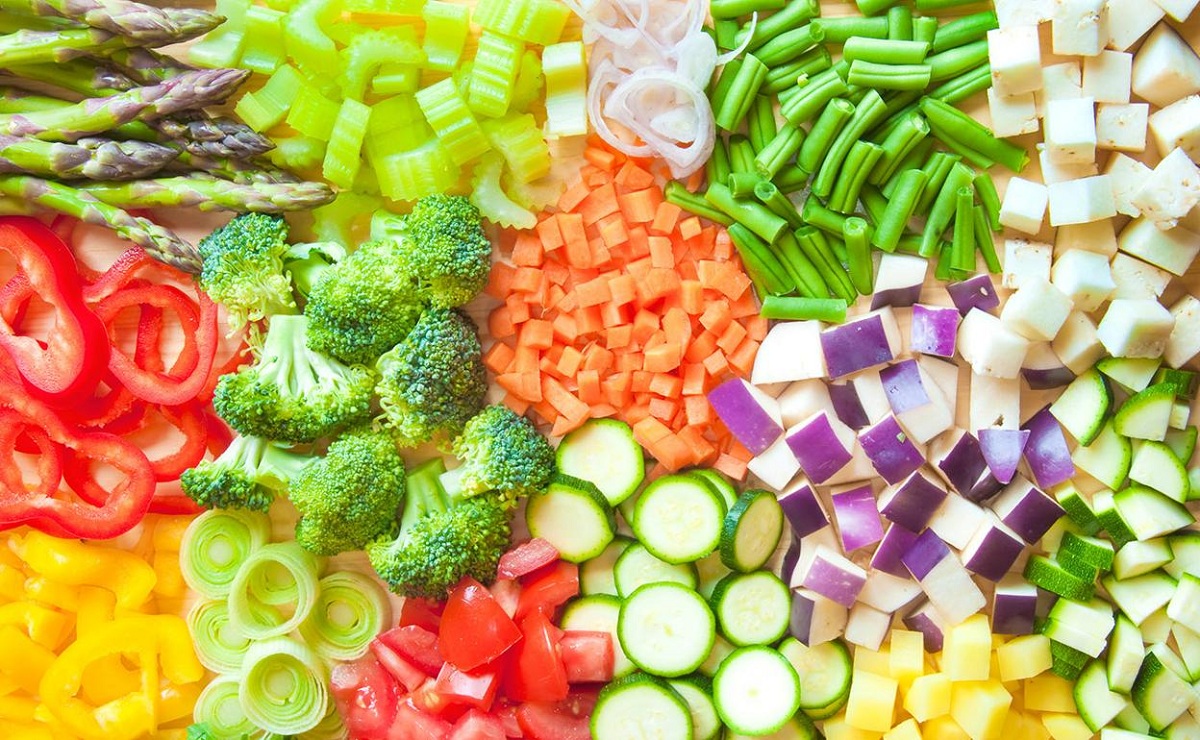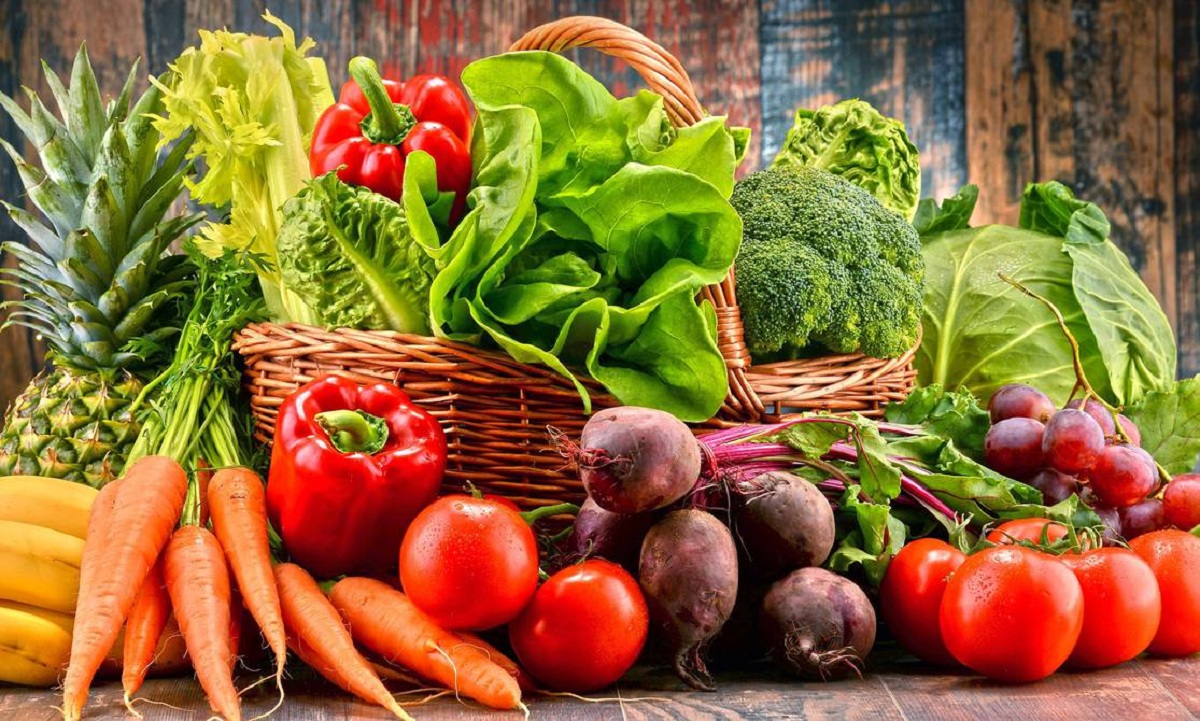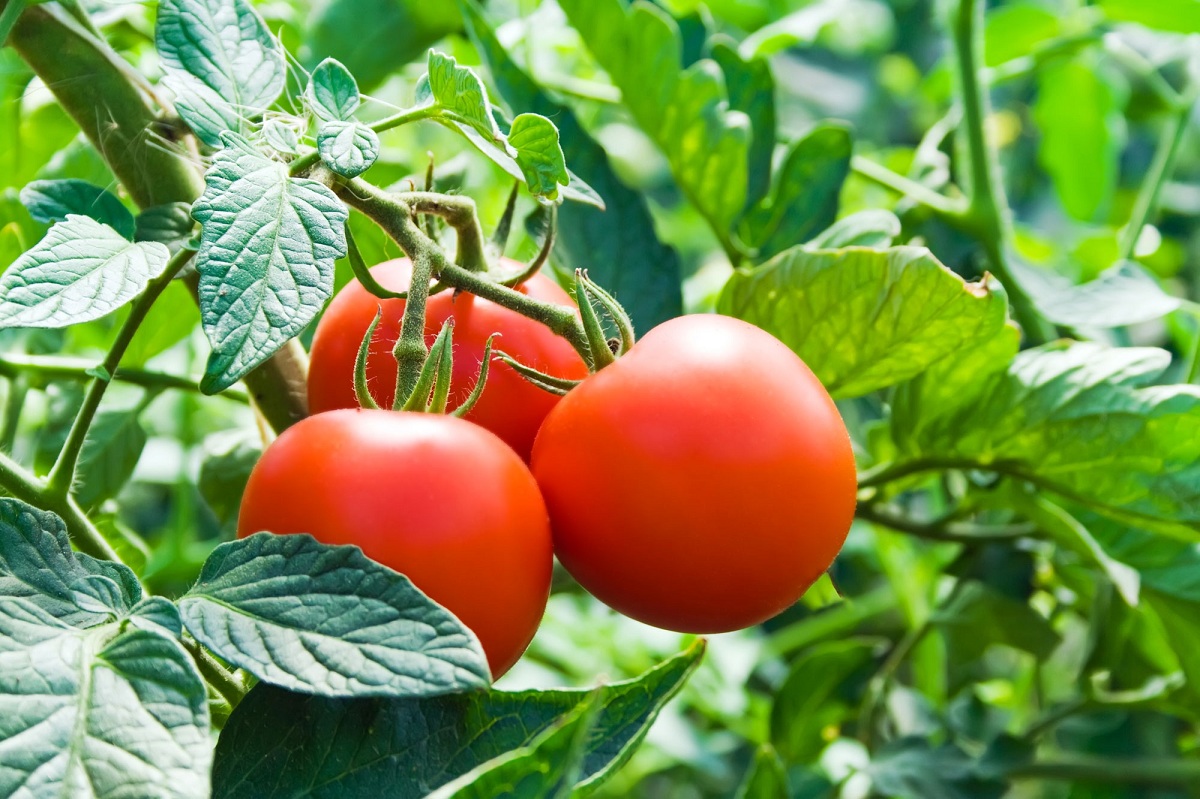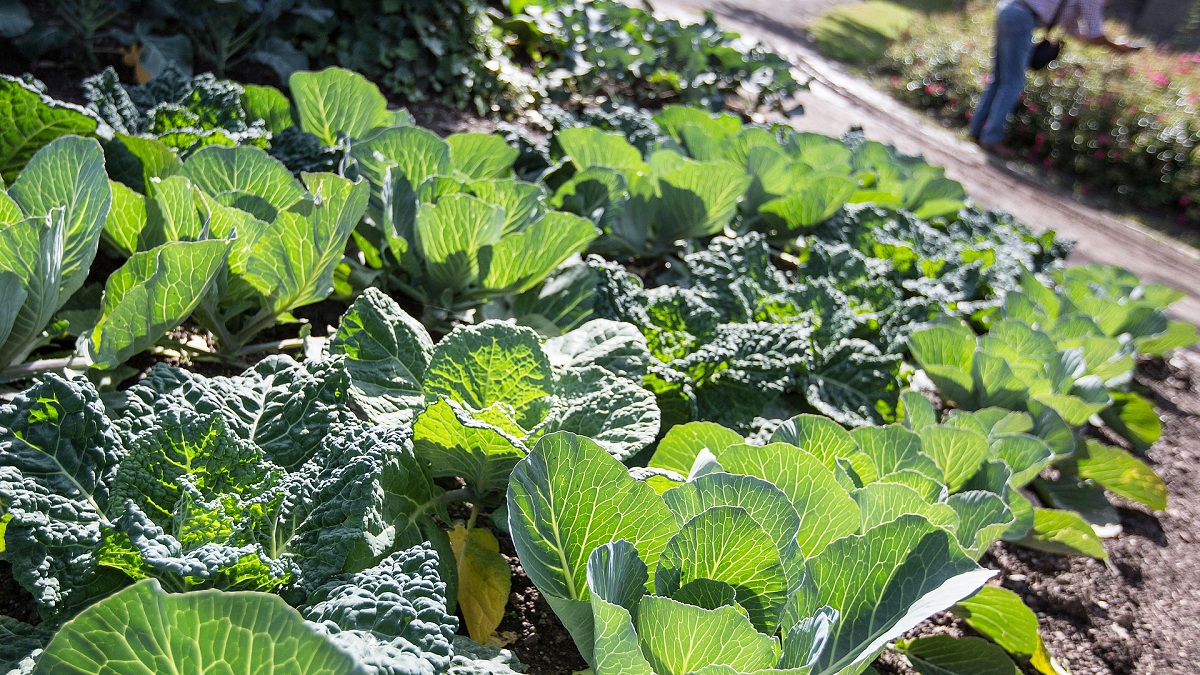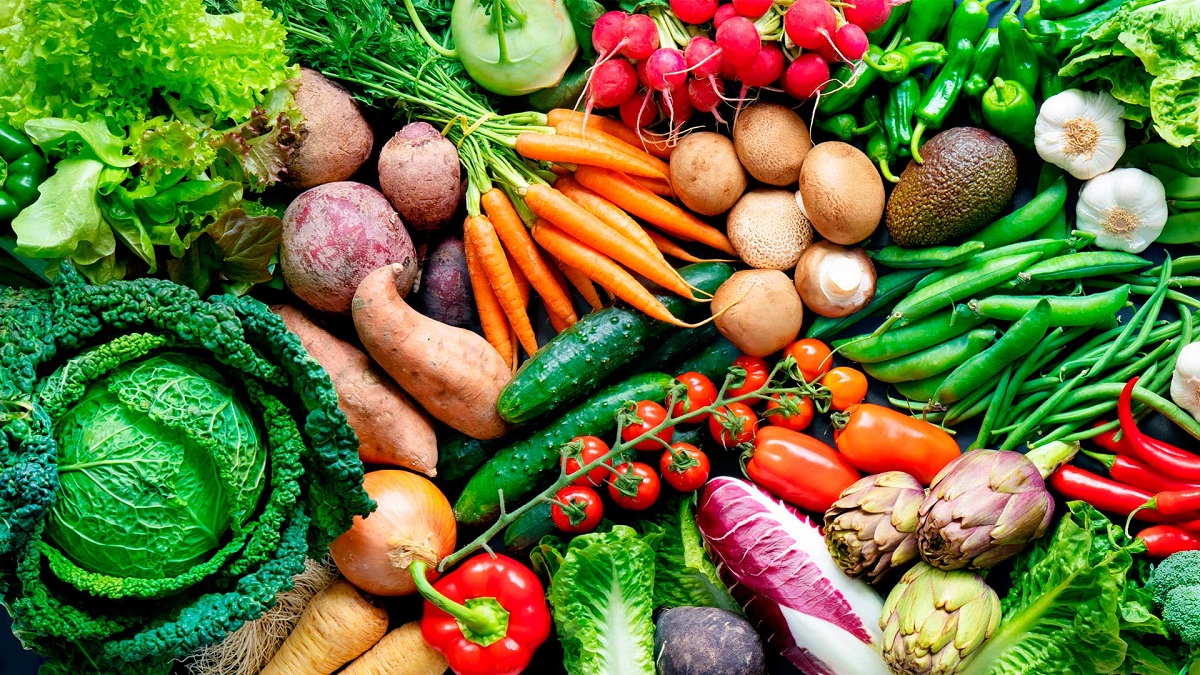
All the vegetables and vegetables are low-calorie foods, rich in water, fiber, vitamins and minerals. Their antioxidant effect makes them essential in our diet. This work analyzes the nutritional value of the main vegetables and greens, and provides some suggestions on their dietary risks and proper cooking methods for these foods.
In this article we are going to tell you about the characteristics of vegetables, the main types and their importance.
Vegetables and vegetables
The vegetable group includes a large number of plant foods from the garden. Those whose edible parts (stems, leaves or inflorescences) are green are called vegetables. It is a group of foods that act as natural antioxidants along with fruits. We must promote their consumption, because only when they are naturally present can we absorb antioxidants in perfect condition and can they work. Supplements or foods rich in antioxidants they cannot provide the 3-5 servings of vegetables that we need in our daily diet.
Vegetables and vegetables have two important characteristics: fiber and water that provide undeniable nutritional advantages (the main components of these foods represent 80-90% of the total). Their energy value is very low because they hardly provide any macronutrients. Except for starchy foods, the carbohydrate content of greens and vegetables should not exceed 10%. In addition, they contain important minerals and vitamins, which make them an essential part of the diet that maintains the normal functioning of our body.
The vitamins that we must highlight are provitamin A (β-carotene), vitamin C and folic acid. This is because other vegetables such as grains and legumes or animal products often lack them. They also provide niacin, vitamins B1 and B2. As for minerals, they mainly contribute potassium, but also a small amount of calcium and iron, which cannot be ignored. They also contain vitamin C which facilitates the absorption of this iron.
Risks in its consumption
There are some risks to consuming vegetables such as the following:
- Molds: They can be found in most plant foods or food mixes, of which vegetables are a part. Some of these molds form toxins with high pathogenic activity, so if we show the characteristic cottony colonies of molds, we must reject the entire product.
- Listeria monocytogenes: It can be found in fresh vegetables grown in cold rooms. To prevent and control its growth, it is recommended to cook it at a suitable temperature as much as possible before eating it.
- Clostridium botulinum: It is a bacterium that produces toxins with great toxic potential. It cannot grow in the presence of oxygen and can withstand less intense heat treatment. When vegetables come into contact with the ground, they can become contaminated with this spore.
The problem is not with fresh produce, because they have oxygen, they are refrigerated, and vegetables have a large number of microbes that will compete with dangerous microbes. The problem is in the canned food. By performing a heat treatment, most or all of the competing flora is destroyed. If botulinum spores are free, they are competitors, in the absence of air they can multiply and form toxins. In these cases, the risk is very high and can be fatal.
In the industrial field, this risk is well known and fully controlled. However, in the domestic sphere, this is not the case. The fundamental problem lies in the national production of canned food, which can cause botulinum poisoning because it is not controlled. In these cases, the solution is to heat it for a long time to preserve it and ensure the complete destruction of microorganisms.
Substances that are not nutritious
Spinach or beet greens contain oxalate. They bind to calcium, limit its absorption, and are often involved in the formation of kidney stones (kidney stones) in sensitive people.
Cabbage contains substances that cause goiter, which can fix iodine in food, thus preventing its absorption and inducing the appearance of goiter or iodine deficiency.
In any case, repeated and prolonged use are necessary conditions for problems. At present, due to the diversity of the diet, these problems are difficult to occur. However, we recommend eating a varied and balanced diet.
How to cook vegetables correctly
Cooking vegetables helps their intake and gives them better sensory properties, but water-soluble vitamins are also lost in large quantities, and these vitamins enter the cooking liquid, especially B1 and C (25% to 60%). The minerals are not destroyed, but instead enter the cooking liquid. The loss is due to the following factors:
- Oxidation.
- High temperature.
- It took too long to cook.
- Dissolve in the cooking liquor.
To minimize losses, we must:
- If possible, cook in the oven with their skins (peppers, potatoes).
- Cut into large pieces to reduce loss of contact with water.
- Boil with the least amount of water. The pressure cooker and steaming are the best options.
- Make the most of the cooking water.
- If possible, add a few drops of lemon juice or vinegar to the cooking to benefit the acidic environment and protect the vitamins.
Differences between vegetables and greens
According to RAE, the term vegetable is defined as "edible plants grown in gardens". In other words, it refers to all the vegetables that we eat, its roots, leaves, seeds, fruits, stems, bulbs, etc. Vegetables do not include grains or fruits.
Due to their breadth, vegetables can be divided into:
- Edible stems: They are what we usually call tubers. It is a fattening stalk that grows underground and is used to feed the rest of the plant. For example, they are edible stems: potato, sweet potato or ginger.
- Fruits: They are part of the vegetables and are in charge of protecting the seeds and ensuring their dispersion. Pumpkin, eggplant, and tomato are examples of fruits.
- Bulbs: They are vegetables that are usually round in shape, accumulate reserves and tend to grow underground. Some examples of bulbs are garlic and onion.
- Edible roots: as its name suggests, those roots that can be eaten. Carrots, turnips, and turnips are examples of edible roots.
- Vegetables: They are the green part of vegetables, to further expand the term, it should be noted that it belongs to the food sector more than the vegetable sector, the RAE defines them as "vegetables, especially green leafy vegetables". We can think of vegetables as all edible vegetables with young stems and leaves, although there are some exceptions, such as cauliflower and broccoli, we eat their flowers and they are considered vegetables. Examples of vegetables, lettuce, or broccoli.
Vegetables of the season
Let's see which are the best months of the year for each vegetable according to its season:
- January and February: Swiss chard, chicory, artichoke, celery, borage, broccoli, pumpkin, lamb's lettuce, thistle, onion, parsnip, collard greens, endives, cauliflower, endive, spinach, turnip greens, baby bean, fennel, ginger, winter lettuce, leek, beet .
- March: the same as in January and February with a difference of young garlic, watercress, borage, broccoli, asparagus, peas and snow peas.
- April and May: sorrel, chicory, young garlic, artichoke, watercress, broccoli, onion, cabbage, cauliflower, asparagus, pea, young bean, snow peas, green bean, leek, radish, beet, carrot.
- June: sorrel, garlic, watercress, zucchini, onion, asparagus, green beans, lettuce, new potato, cucumber, pepper, radish, beet, carrot.
- July and August: eggplant, zucchini, onion, green bean, lettuce, potato, cucumber, pepper, mushroom, okra and tomato.
- September: chard, eggplant, sweet potato, pumpkin, onion, mushroom, parsnip, lettuce, okra, potato, cucumber, pepper, leek, tomato.
- October: Swiss chard, artichoke, celery, sweet potato, zucchini, pumpkin, lamb's lettuce, onion, mushroom, parsnip, cabbage, cauliflower, lettuce, leek, beet.
- November: Swiss chard, artichoke, celery, sweet potato, borage, broccoli, pumpkin, lamb's lettuce, onion, mushroom, parsnip, cabbage, cauliflower, endive, fennel, strawberry tree, leek, beet.
- December: Swiss chard, artichoke, celery, sweet potato, borage, broccoli, pumpkin, lamb's lettuce, thistle, onion, cabbage, cauliflower, endive, endive, spinach, fennel, ginger, winter lettuce, leek, beet.
Farming
We are going to know in a general way the main aspects necessary to grow vegetables:
You should look for an area that receives a lot of sunlight during at least 6 hours a day. You should also remember that the area should not be too cold or too hot, because Temperatures below 5-10 degrees or above 35 can damage your crops. Another aspect to take into account is the wind, so it is advisable to look for a sheltered area, or if there are no elements to protect our plants.
A fundamental aspect when growing vegetables is irrigation. Each one will require a different amount of watering. The soil must have very good nutrients and be well drained so as not to accumulate irrigation water or rain.
Finally, be careful with the different pests and diseases that can attack crops. Each vegetable is going to be vulnerable to some plague or disease. You just have to keep a watch and have knowledge about it.
I hope that with this information you can learn more about this whole topic.
